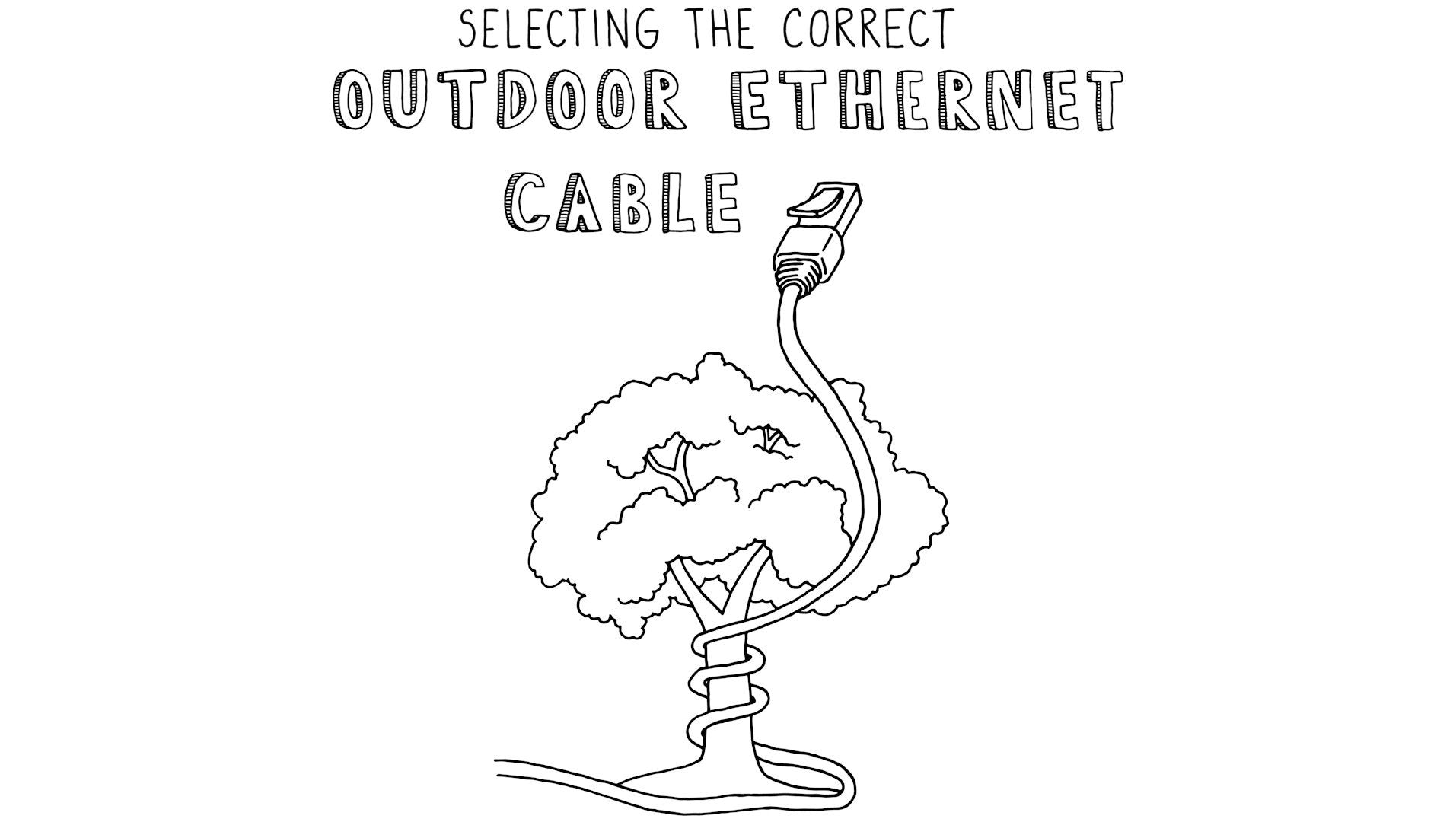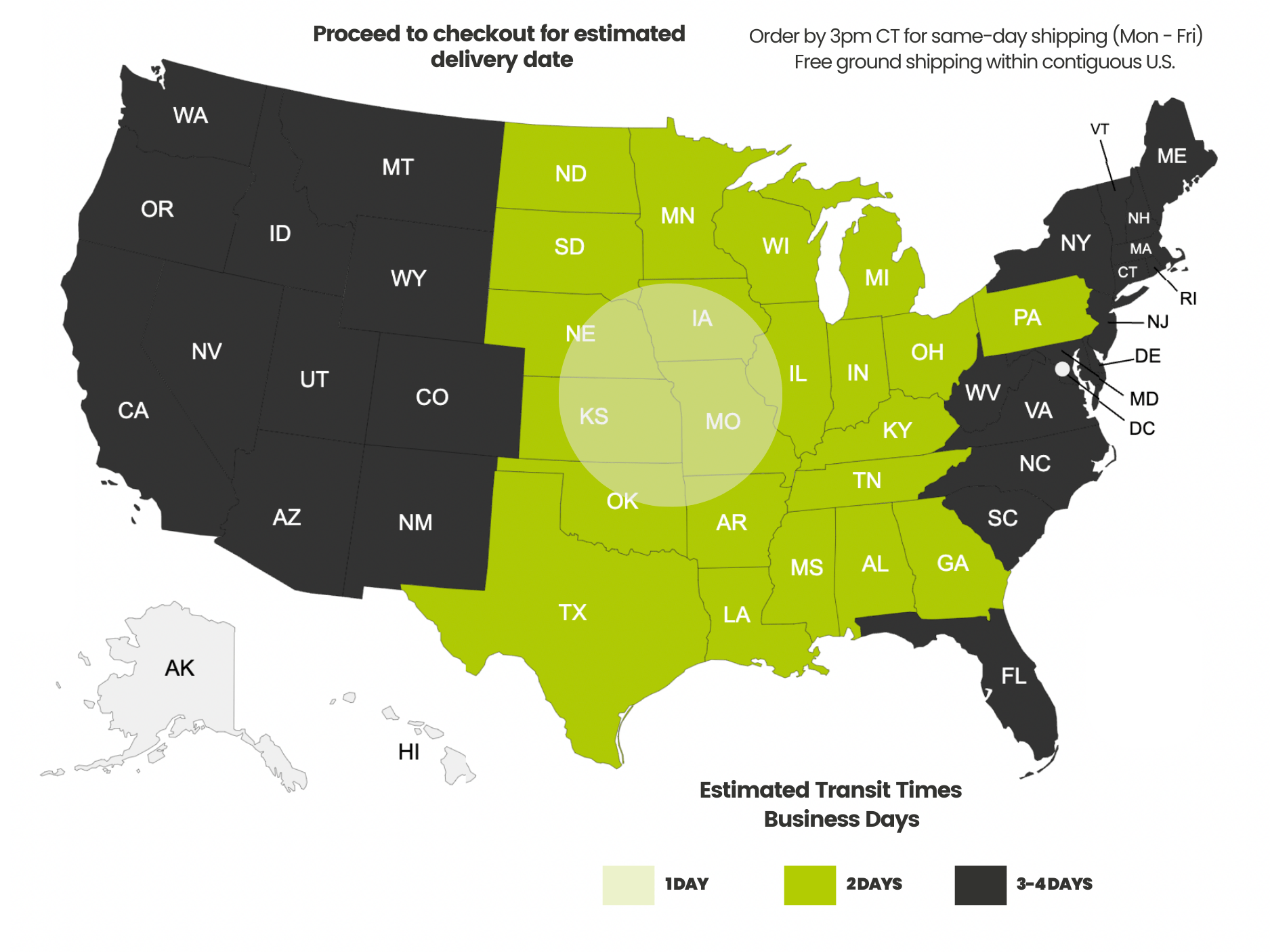Payment methods accepted

Selecting the Correct Outdoor Ethernet Cable
The right tool for the right job. How many times have you heard this? If you are confused about which outdoor Ethernet cable is the best choice for the job at hand, then you are not alone. Outdoor cable selection can be daunting for even the most experienced installer, let alone a DIYer tackling a home project.
Exterior rated Ethernet cables are waterproof and have a UV resistant jacket designed to withstand sunlight, snow and ice. Direct burial rated cables can be buried in the ground without conduit. The primary jacket type you’ll need for any outdoor installation is CMX rated. CMX jackets are very different from the typical indoor cable jackets such as riser or plenum. Riser and plenum jackets are mostly PVC, and as such will allow moisture vapor to enter and escape the cable as the temperature changes. This is normally not an issue inside a climate-controlled environment and is a phenomenon that goes unnoticed.
Running riser or plenum cable outside, though, is a very bad idea. Before I get into exactly why CMX jackets are the only choice, I want to quickly address and debunk a common question I get:
Can I put my indoor rated (riser/plenum) cable into PVC conduit and just run it outside like that?
I have a short and clear cut answer: NO.
The slightly longer answer is, PVC conduit also allows moisture vapor to enter. It is also great at allowing that vapor to remain, and it becomes liquid when temperatures change. The PVC pipe you thought was protecting your cable is now public enemy #1 to your cable run. That is right, your cable will end up submerged in water most of the time.
So, CMX is necessary for outdoor applications. CMX cable jackets, the high-quality ones, are constructed from a treated LLDPE (linear low-density polyethylene).
CMX is great at:
- Resisting temperature swings
- Remaining workable and operable in very low temperatures without cracking
- Blocking moisture vapor (not just water)
- Shrugging off snow, ice, and most nasty things Mother Nature can toss at it
- Preventing degradation due to UV light
Given you know CMX is the right cable jacket, the next big consideration is exactly how and where you intend to put this cable outside. This is where the real choices come in. You know what they say, a handy infographic matrix is worth a million words:

* If run in this fashion, a separate messenger wire is required (either velcro tie to a wire with messenger or velcro tie to a stainless steel wire securely fastened to the two structures)
Some Common Questions and Direct Answers:
I need to run my Ethernet cable inside and outside. I don't want to spend twice the money on two kinds of Ethernet cable and have a limited budget. What do I do?
You might be in luck! It all depends on whether your installation is commercial or residential. According to the NFPA 70/NEC (National Electric Code) section 800.113, since CMX Ethernet cable is not fire rated it must not run indoors more than 50 feet and then needs to be transitioned to indoor rated cable in any commercial structure.
For residential single family and duplex dwellings, CMX Ethernet cable is permitted to be used as indoor/outdoor network cable without restriction with the caveat that it cannot exceed 0.25” thickness (OD or outer diameter). As it turns out, trueCABLE offers several Ethernet cable types that meet this criteria, and they are marked with a special residential icon in the table above. Also, read Can Outdoor Ethernet Cable Be Used Indoors?: The Perfect Cat6 Residential Ethernet Cable for more detail.
Is it better to put direct burial outdoor cable into conduit or just bury it directly in the ground?
In short, my experience is direct burial rated cable buried deeply without conduit is less likely to fail over time. Believe it or not, putting cable directly into the dirt is actually a very good idea, assuming you are willing to bury it at least 18” down for most parts of the USA. If you go this route, include some lazy “S” patterns in your run so that Mother Earth will not destroy your cable as she moves. She does move, albeit slowly. Humans live in a fast forward mode compared to the planet, but the planet is always shifting. You see this phenomenon in cracked concrete, buckled asphalt, and sinkholes. Yikes.
Do I need shielded cable outside? Why do you offer unshielded?
Cable shielding serves dual purposes. One you likely know about, which is to help prevent EMI/RFI from disrupting your signal in environments that are rife with it. The other purpose is grounding, which is not only key to allowing EMI/RFI to drain off but also allow static electricity to drain off too (ESD). Any Ethernet cable outdoors that is subject to air movement outside, especially when it is suspended in the air, is going to generate ESD - period. A properly grounded cable shield will help prevent damage to your network devices. No, lightning will not be warded off. Lightning will light you and your cable up, and there is no way around that other than also inserting lightning surge protections into the cable run. For high lightning risk installations and environments, that is the only way to go.
Ok, so why do we offer unshielded? This cable type can be used in direct burial scenarios where electrical runs underground are not close by. The dirt itself will ground out your data cable. If you are certain of your environment, you may also use unshielded direct burial cable if it is attached to a single structure only (like along the siding or under the soffit of a house). ESD build-up and resultant equipment damage is a possibility, but a remote one.
Should I use gel filled or water blocking tape direct burial cable? Which is better?
Both cable types have their pros and cons. One is not necessarily better than another, depending on what you are doing. Rather than go over the relative pros and cons of each here, see Direct Burial Ethernet Cable: Gel Filled vs. Waterproof Tape.
So, now you have some choices to make on outdoor Ethernet cable and advice to sally forth.
HAPPY NETWORKING!
trueCABLE presents the information on our website, including the “Cable Academy” blog and live chat support, as a service to our customers and other visitors to our website subject to our website terms and conditions. While the information on this website is about data networking and electrical issues, it is not professional advice and any reliance on such material is at your own risk.



























